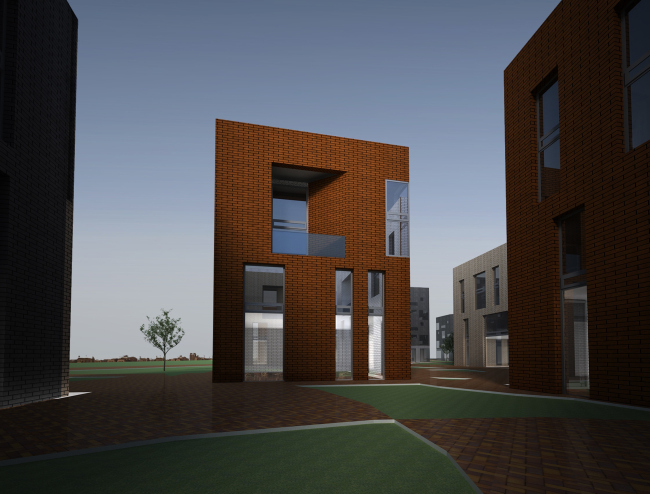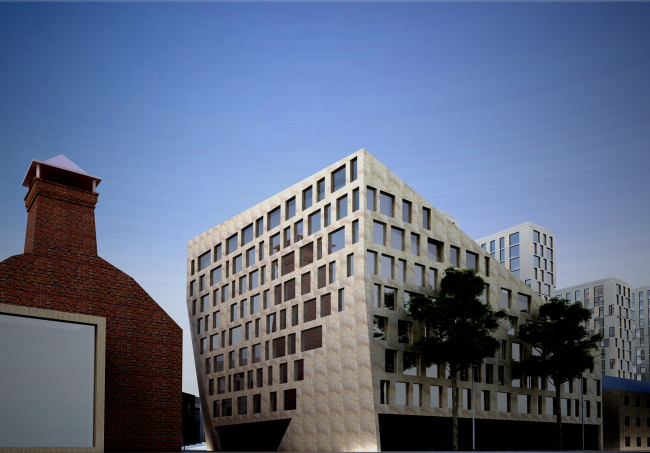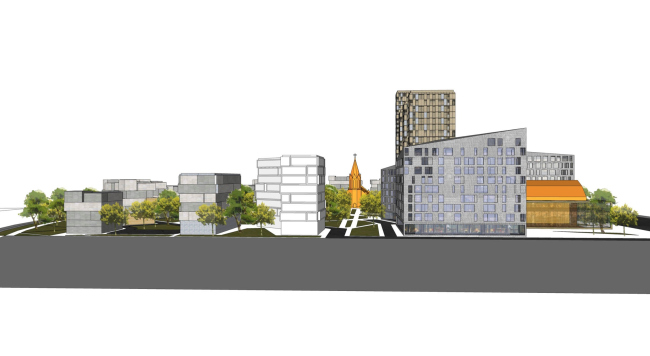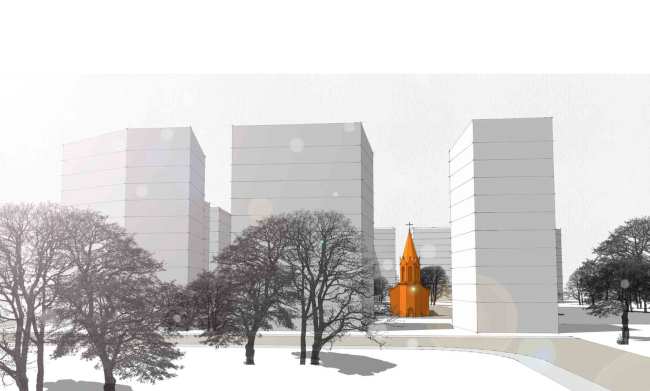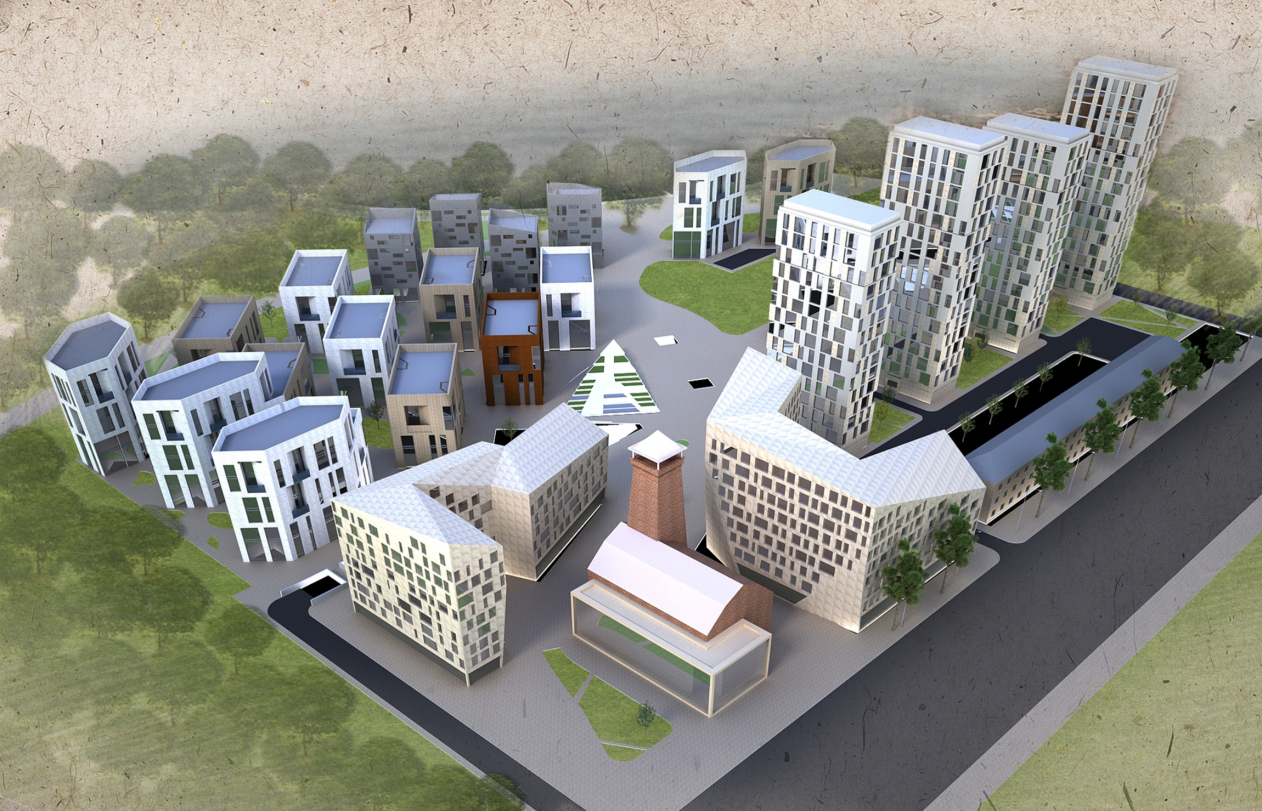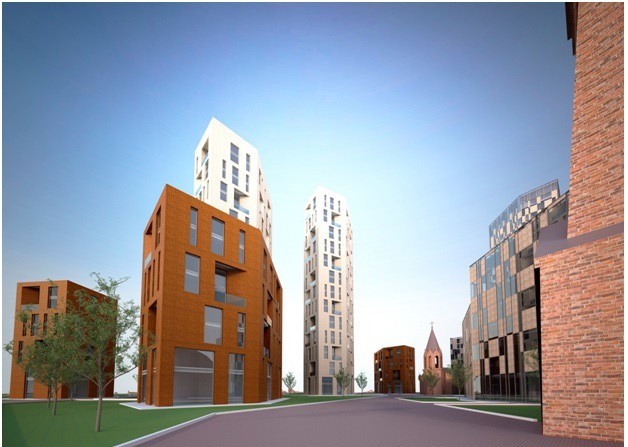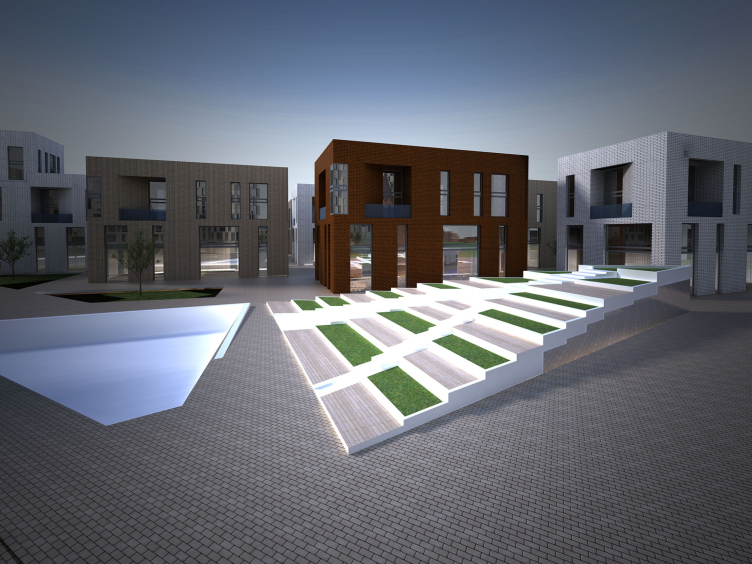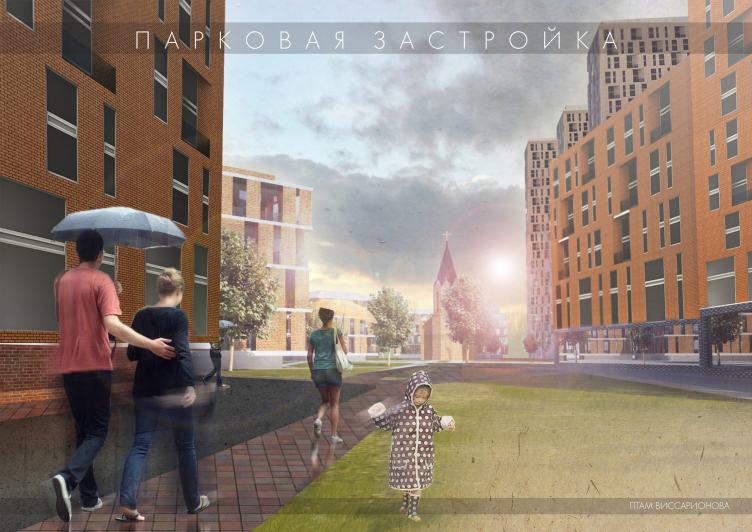The land site that is going to be completely renovated
is located in the very heart of the city of
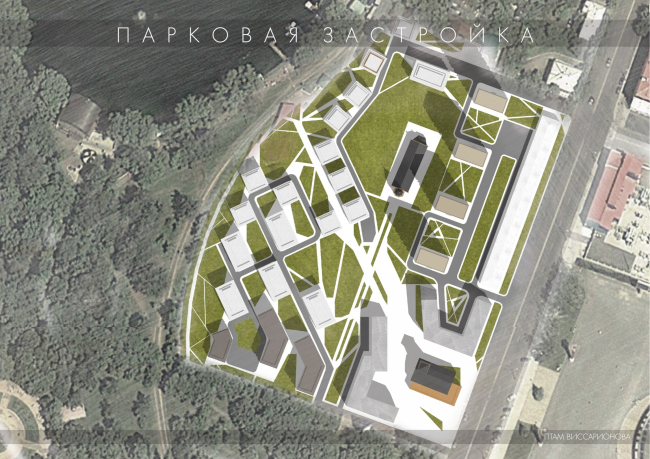
An important starting point in designing the new
architectural image was the history of the place, as well. The street, since
the mid 1930's bearing the name of Lenin, appeared at the turn of XVIII-XIX
centuries, and once it was this particular street that served as the dividing
line between the place where the residential area ended and the place where the
cemetery began. Back in 1903, looking to use the wasteland to the benefit of
the city, the Ufa City Duma (the Russian for "city council" -
translator's note), designated it for "laying out a park" that soon
became a favorite place for townspeople. A little later between the park and
the street there was built a two-story building with a fire tower (1907), while
from the rear side its corner was adorned by a protestant church (1910). Both
these buildings survived into the present day and were to be included into the
composition of the new block "recreating the spirit of the historical
place in the renovated environment".
The three-story residential house that was built in
the soviet times and that stretched along the
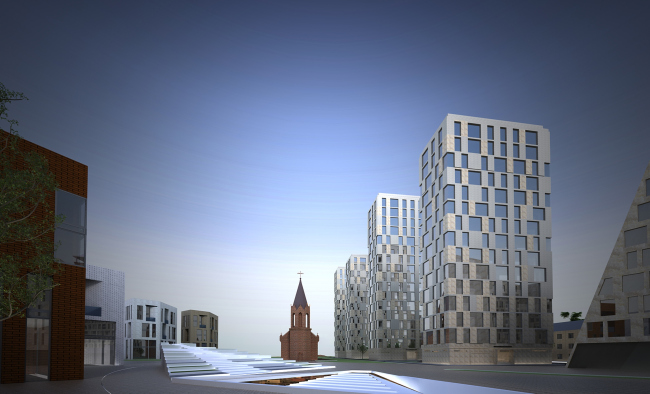
The only catch was the already-existing residential
building - the elongated parallelepiped simply would not be in harmony with the
aesthetic of the city summer home, so it had to be at least visually separated
from the new block. What helped to solve the problem was the commissioner's
request to build, within one block, houses of different class. The architects
broke the required quantity of "economy class" square footage into
four one-hallway towers that they arrayed into one row parallel to the long
residential building. In order to prevent these towers from overhanging above
the old building too obviously, the architects make large square courtyards in
between them, while along the existing building they run a smaller park of
similar elongated layout.
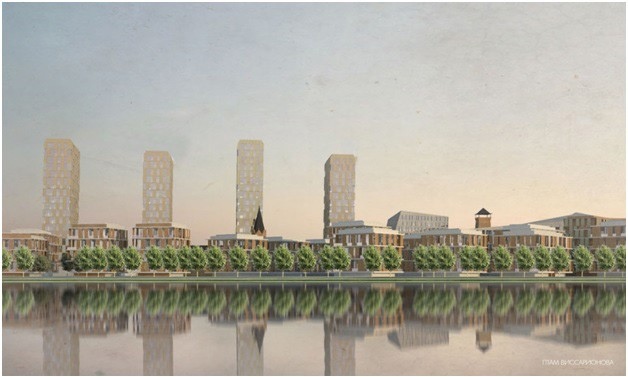
Thus, the only corner of the block that faces the
crossroads of two streets is in fact a fragment of a strictly urban environment
with traditionally densely placed buildings. The architects deliberately build
the towers with different numbers of floors - the rhythmic alternation of
height, according to their idea, will give the skyline some visual lightness
and will enhance the recreational character of the block that begins directly
behind them. The facade solution also serves the same purpose - the window
openings of various width are superimposed upon the wall surfaces in a
seemingly random, even chaotic, way; some of them even overlap with the corners
of the buildings - which does not, of course, dissolve the verticals in the air
but visually takes away some of their excessive massiveness.
The compositional and the "environmental"
centerpiece of the block, according to the architects' plan, is the diagonal
that connects the fire tower and the longitudinal axis of the church running
parallel to the
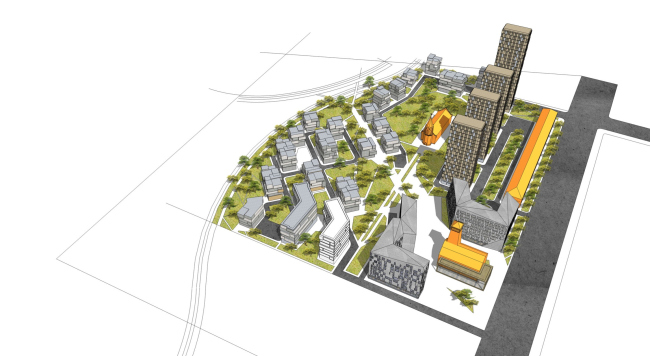
These volumes, in turn, are designed as
curvilinear braces, one of them looking as it were lightly hugging the fire
brigade building, and the other one looking, conversely, as if it were turning
away from it and serving as a curious sort of "pocket" for the preserved
residential house. Thanks to such placement, the architects get the opportunity
to protect the yards of the residential houses from the direct access to the
offices, while the corner of the block gets an entrance portal of sorts - it
looks as though some kind of vortex sucks in the people flows inside. The
dynamic structures serve as a peculiar "theater decoration" that
adorns the territory around the historical building of the fire brigade but the
fire tower itself rather looks like a visual reminder of the past: the complex
is being restructured for different functions, and its low-rise part is covered
with a rectangular transparent prism - the "showcase" of the future
business, community, and cultural center.

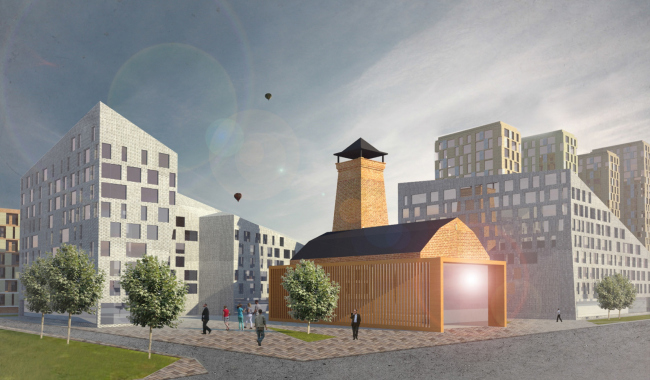
The bigger part of the land site that faces the park
is filled with 4 and 6-story houses that the architects place predominantly
parallel to the set diagonal of the pedestrian promenade. Such layout allows
for giving almost all the buildings the view of the lake and making all the
housing of the new block as permeable for the park as possible. Thanks to the
abundance of green plants in all the building surrounding grounds, one gets a
feeling as if the forestland stretched its green protuberances into the
residential block. The official name of the concept - "Park Housing"
- is justified, though, not only by the proximity to the in-city woodland area
but also by the architectural treatment of the buildings themselves. The
architects developed several design options for the houses - stones, bricks, and
wood - but what they all have in common is the intimacy of the form and their
closeness to the genre of city villas.

Taking the existing park as the key territory- and
style-forming factor, the architects were able to integrate into the new block
all the diverse features of the adjacent territories - the historical legacy,
the residential housing, and the urban community center. It was this
comprehensive approach to renovating an important fragment of the city and
creating here a diverse and comfortable environment that earned the concept
"Park Housing" a Silver Diploma at the contest
"Archnovation-2013".
